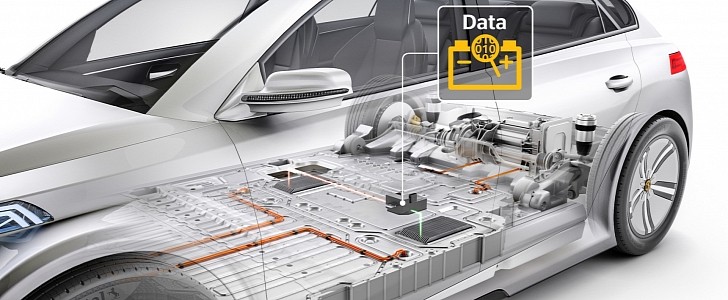German automotive parts manufacturer Continental plans to launch two new sensors for electric cars, designed to protect the battery and retain its performance.
Electric cars have even more sensor needs than conventional vehicles and Continental’s two new sensors promise to meet some of the most important ones, being designed to support both electrification and road safety. One of them is the Current Sensor Module (CSM), which aims to ensure the long-term durability of the battery, protecting it from overstress and limiting aging effects. Continental’s other recently unveiled sensor is the Battery Impact Detection (BID) system, which can sense potential battery damage and warns the driver about it.
The CSM gets integrated either in the battery disconnect unit or the battery itself. As explained by Continental’s Horst Gering, program manager in the Passive Safety and Sensorics segment, lithium-ion batteries have an optimum temperature span in which they’re safe and age very slowly. But some factors, such as fast charging the battery or driving the car in a more aggressive, sportier manner, will cause the battery to heat up and will shorten its lifespan. Continental’s CSM sensor helps keep it healthy and safe, providing valuable current and temperature info. It will also detect any mechanical malfunctions, which might lead to a fire if unidentified in a timely manner. Continental says it plans to start the mass production of its CSM sensor sometime this year.
As for its BID system, it can detect and classify underfloor impact events, alerting the driver if the battery integrity has been breached. It can also pinpoint the area of the damage, so the battery management can empty the cells in that area to prevent any risk of fire, as explained by Johannes Clemm, managing director at Continental Safety Engineering in Alzenau.
Two main types of impacts are covered by the BID system. One is ground contact at low speeds, for instance when a driver is parking the car and the vehicle rolls over a curb and hits the ground. The other type is high-speed intrusion, which can be caused by objects such as rocks or lashing straps, which can damage the underfloor and maybe even penetrate the structure of the battery. So far, Continental hasn’t mentioned a production date for its Battery Impact Detection system.
The CSM gets integrated either in the battery disconnect unit or the battery itself. As explained by Continental’s Horst Gering, program manager in the Passive Safety and Sensorics segment, lithium-ion batteries have an optimum temperature span in which they’re safe and age very slowly. But some factors, such as fast charging the battery or driving the car in a more aggressive, sportier manner, will cause the battery to heat up and will shorten its lifespan. Continental’s CSM sensor helps keep it healthy and safe, providing valuable current and temperature info. It will also detect any mechanical malfunctions, which might lead to a fire if unidentified in a timely manner. Continental says it plans to start the mass production of its CSM sensor sometime this year.
As for its BID system, it can detect and classify underfloor impact events, alerting the driver if the battery integrity has been breached. It can also pinpoint the area of the damage, so the battery management can empty the cells in that area to prevent any risk of fire, as explained by Johannes Clemm, managing director at Continental Safety Engineering in Alzenau.
Two main types of impacts are covered by the BID system. One is ground contact at low speeds, for instance when a driver is parking the car and the vehicle rolls over a curb and hits the ground. The other type is high-speed intrusion, which can be caused by objects such as rocks or lashing straps, which can damage the underfloor and maybe even penetrate the structure of the battery. So far, Continental hasn’t mentioned a production date for its Battery Impact Detection system.








